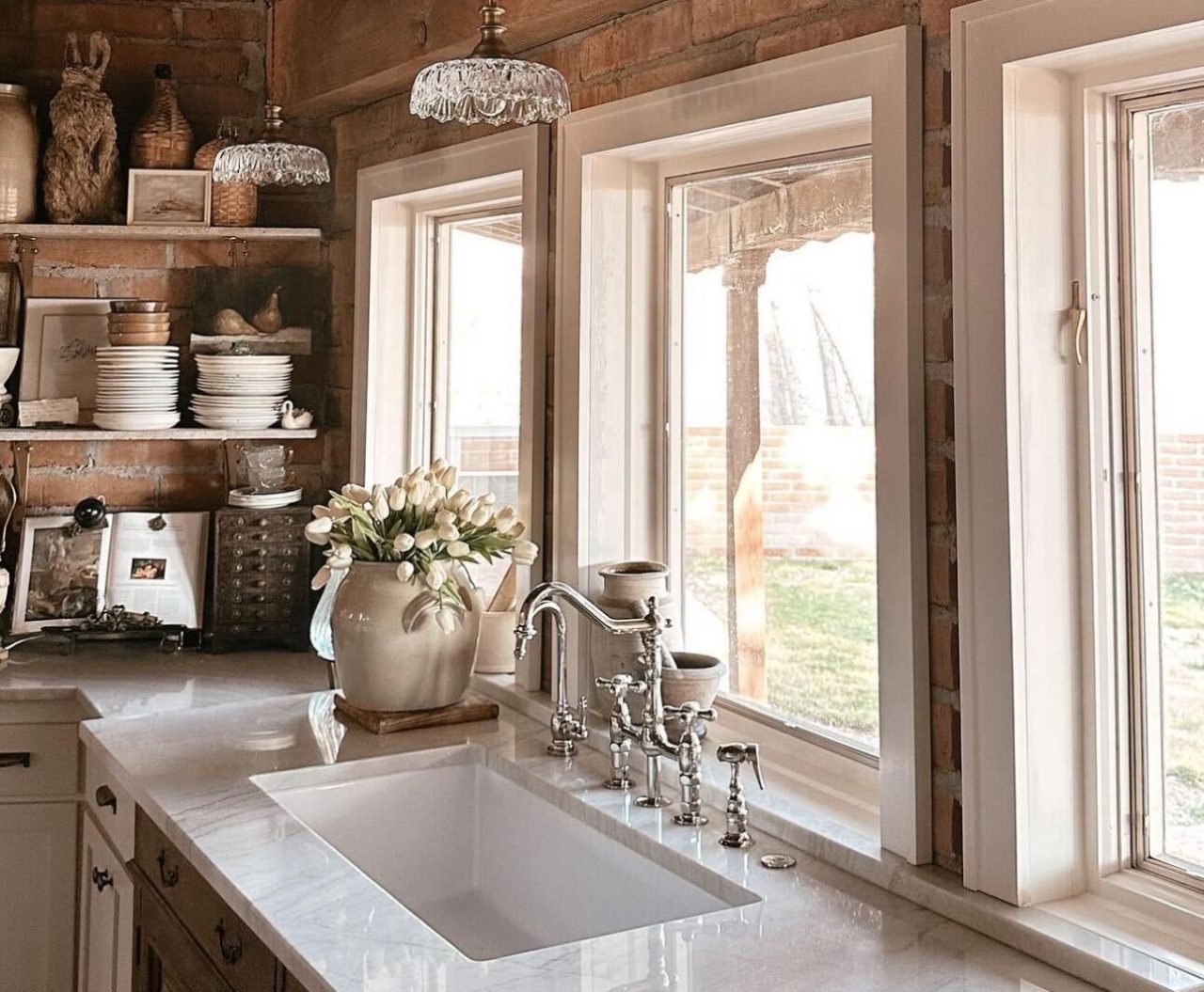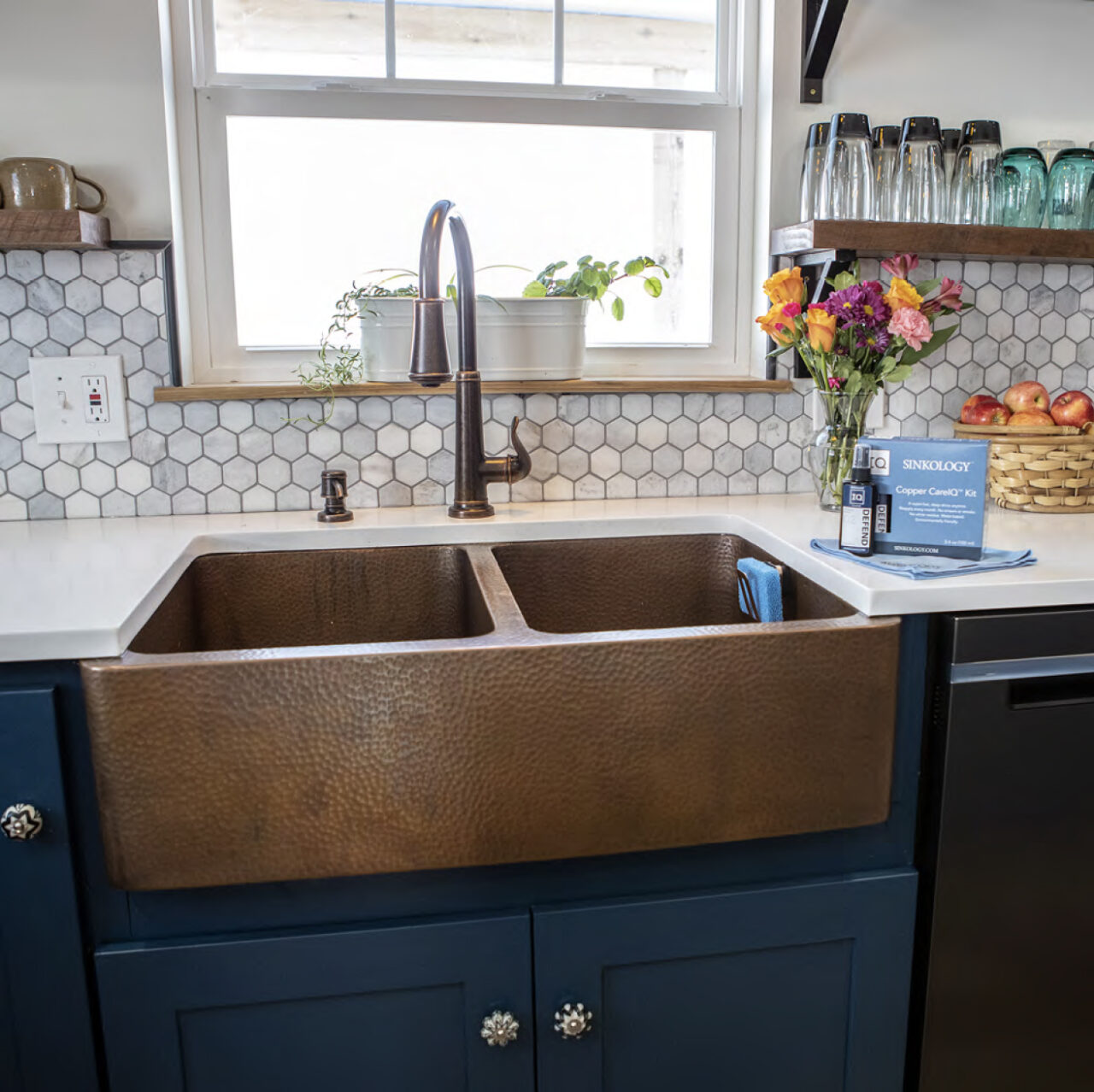Farmhouse Sink vs. Apron Sink: What’s the Difference?
Welcome to School of Sinkology – 101, your friendly guide to making smart sink choices. If you’re exploring new sinks but unsure of the difference between a farmhouse sink and an apron sink, you’re in the right place. This guide will help you shop with confidence and feel knowledgeable every step of the way.
Why Get This Right
Choosing a sink is more than aesthetics, it’s about functionality, comfort, and long-term satisfaction. Knowing the difference between farmhouse and apron sinks helps you:
- Communicate clearly with designers or contractors
- Match your selection to how you live and cook
- Avoid surprises in sizing or installation
Defining the Terms: What’s the Difference?
Farmhouse Sink
A farmhouse sink is defined by its depth and capacity, usually around 9–10 inches deep. Designed for heavy-duty tasks like large cookware, food prep, or even laundry, these sinks bring serious practicality and vintage charm. Many feature exposed fronts (aprons), but that’s not a requirement.
Key Traits:
- Deep, spacious basin ideal for large items
- Traditional, practical design
- Often made of materials like fireclay, cast iron, or porcelain

Apron Sink
An apron sink, sometimes called an apron-front sink, is defined by its exposed front panel that extends slightly over the cabinetry. While they often overlap with farmhouse sinks, apron designs can vary greatly in depth and material.
Key Traits:
- Visible front “apron” that becomes a design focal point
- Flexible depth (not always as deep as farmhouse models)
- Available in a wide range of materials, from modern metals to composites

Comparing Head-to-Head
| Feature | Farmhouse Sink | Apron Sink |
|---|---|---|
| Primary Feature | Deep basin (≈9–10″) | Exposed front panel (apron) visible |
| Overlap | Often includes apron, but not required | May be deep (overlap with farmhouse); not always deep |
| Style Aesthetic | Traditional, rustic, functional | Varies—can be modern, minimalist, or rustic |
| Material Options | Fireclay, cast iron, porcelain | Wide range, stainless steel, copper, composites, etc. |
| Installation Needs | Often requires custom cabinetry and strong supports | Typically easier; may fit standard cabinetry |
| User Experience | Roomy and ergonomic for big items | Stylish, ergonomic, with flexible sizing |
Project Planning Tips
- Evaluate your needs: Do you need extra depth for big items, or is style your priority?
- Check cabinet compatibility: Farmhouse sinks may require reinforced or custom cabinetry; apron sinks often fit existing bases.
- Material matters:
- Fireclay offers a durable, chip-resistant finish.
- Cast iron brings vintage appeal but requires careful maintenance.
- Stainless steel or composites offer modern, low-maintenance alternatives.
- Consider daily use and maintenance: Deeper basins may require more water and careful maintenance of certain finishes.
Wrapping It Up
- Farmhouse sink = deep basin + traditional charm, often with an apron front.
- Apron sink = design-focused, defined by its exposed front—depth and materials can vary widely.
Next Lesson & Call to Action
Ready for more? Check out Fireclay Farmhouse 201 or explore our Quick-Fit ® installation guide, designed to make your sink upgrade seamless.
Extra Credit: Share your sink install photos with #ShowUsYourSink you just might land a spot on the Sinkology Wall of Fame!
If you have any additional questions during your search for the perfect copper, fireclay farmhouse sink or crafted stainless steel sink, our Sinkologists™ are here to help. Contact us or follow us on Facebook, Houzz, Pinterest, Instagram, or TikTok for more helpful tips and design ideas.